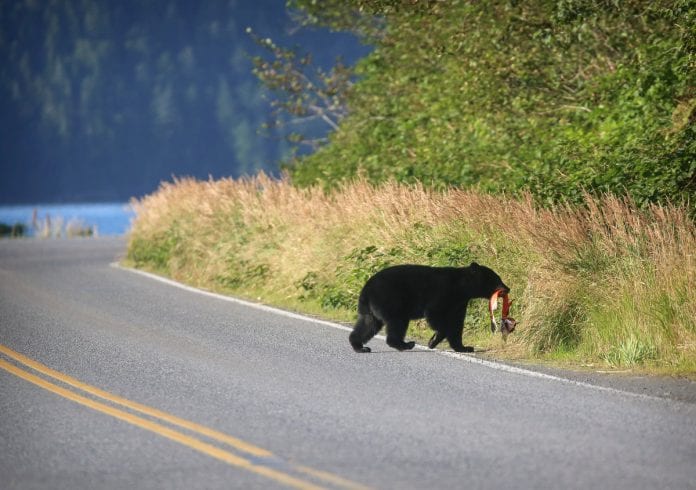
With springtime in Alaska on the horizon, or already here in some areas, it’s time for spring cleaning to prevent issues with bears.
According to reports coming in to the Alaska Department of Fish and Game, bears are already astir in Southcentral, Southeast Alaska and on Kodiak Island. It won’t be long before they’re up and about in northern and western areas of the state.
State wildlife biologists are urging homeowners to bring in bird feeders and clean up spilled seed, remove and secure trash, and make sure that bear deterrents like electric fences surrounding poultry or other livestock are operational and turned on.
Since it’s early in the season, natural foods are scarce in many parts of the state, making human-provided attractants particularly inviting to bears waking from hibernation.
Wildlife biologist recommend storing trash inside buildings or in bear-proof containers, keeping that trash secure until the day of scheduled pickup.
When using dumpsters, be sure to latch lids.
Properly constructed electric fences can keep bears out of gardens, compost ad away from buildings, chicken coops and domestic animals. For more information visit adfg.alaska.gov/index.cfm?adfg=livingwithbears.bearfences.
More tips to keep bears at bay:
- Clean barbecue grills, especially grease traps, after each use.
- Feed pets indoors or clean up excess and spilled food between meals, and store pet food, livestock food and birdseed indoors or in bear-resistant containers
- Keep freezers locked in a secure building or otherwise out of bears’ reach.
- Plant gardens in the open, away from cover and game trails. Only compost raw vegetable matter and turn over compost frequently.
Wildlife biologists are also asked residents to report incidents of bears frequenting neighborhoods or other populated areas, getting into trash or showing aggression.
For more information about coexisting with bears, check out alaskabears.alaska.gov.














